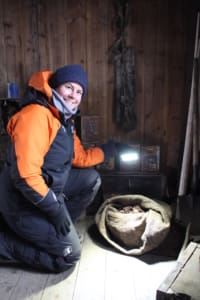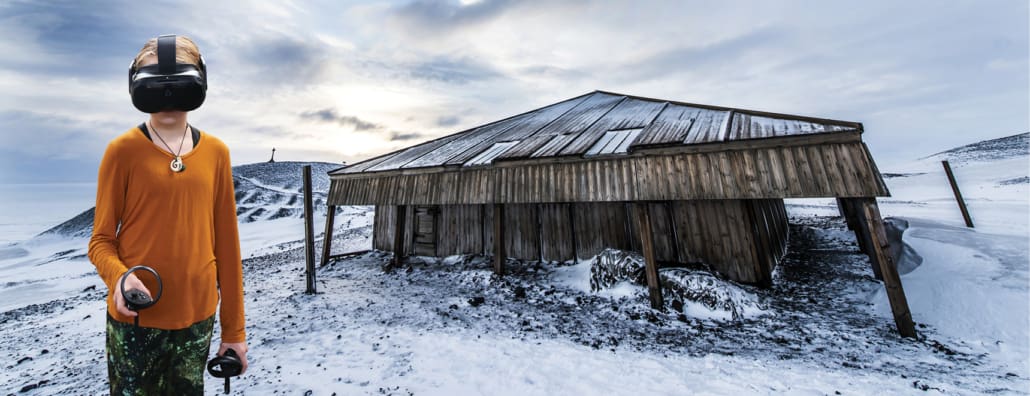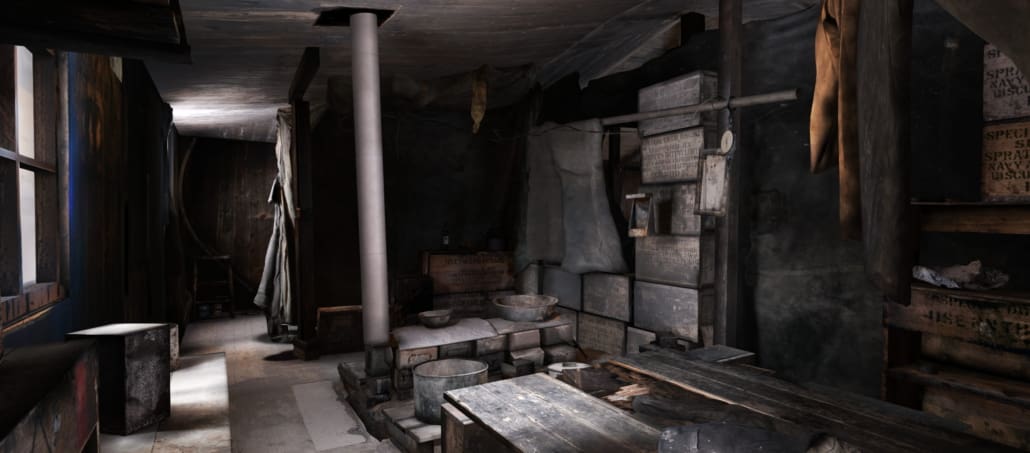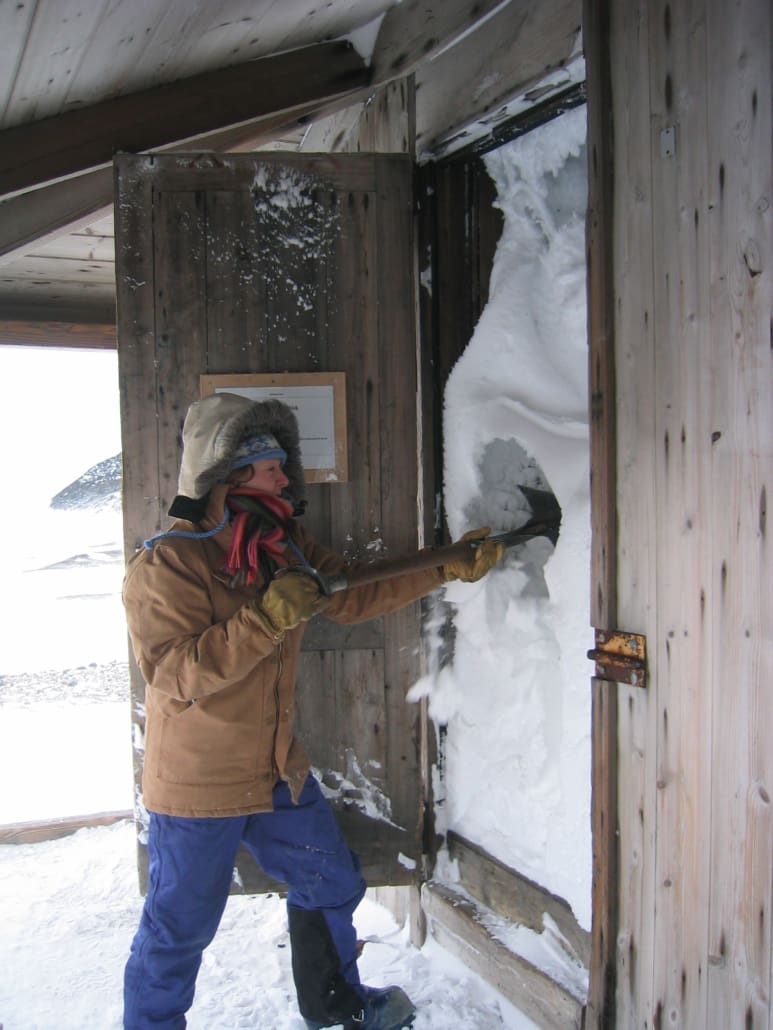‘Cutting-edge Technology’ Showcases Heroic Age of Antarctic Exploration
Antarctic Heritage Trust’s new virtual reality experience allows participants to explore Scott’s Discovery hut on Ross Island, Antarctica. © AHT/Alasdair Turner
A famous Antarctic explorer’s hut is opening its doors to the public for the first time, thanks to cutting-edge technology and a dose of Kiwi ingenuity.
The Antarctic Heritage Trust, in collaboration with Auckland-based virtual reality tech company StaplesVR, is launching the first-ever educational virtual reality experience of Captain Robert Falcon Scott’s Discovery Hut and is bringing it to schools and communities across Aotearoa.
The experience will be officially launched by Trust Patron-in-chief, Her Excellency, The Rt Hon Dame Cindy Kiro, GNZM, QSO, Governor-General of New Zealand at an event at Government House on 15 August.
By donning the VR headset and holding the controllers, participants can come face to face with penguins, feed huskies, and meet heroic-era explorers. Discovery Hut is significant in that it was the first expedition base built on Antarctica’s Ross Island. Scott led the National Antarctic Expedition of 1901-1904 and the hut was built in 1902, making it over 121 years old.
After a two-year conservation programme by the Trust in 2015 to ensure its structural integrity, the hut now looks how the early explorers would have left it – with clothes hanging to dry, and the remains of a meal still in a pan on the stove.
Inside, there are more than 500 artefacts conserved by the Trust’s team.
Christchurch man Clarence Hare was also on the 1901-1904 expedition with Scott. His great-niece Maureen Lee remembers her mother being very proud of her uncle’s participation.
“She told me Clarence got lost in a blizzard for two days and was saved by his favourite dog, but it wasn’t until I read his diary six years ago that I understood what an epic adventure he had been on. He was just 21 when that small wooden ship sailed from Lyttelton Harbour into the unknown, and there was every chance that he might never return. The courage, resilience, ingenuity and comradeship of the expedition members in extremely challenging conditions is truly inspiring.”

Antarctic Heritage Trust Executive Director Francesca Eathorne inspects a bag of onions inside Scott’s Discovery Hut. © AHT/Nicola Stewart
Antarctic Heritage Trust Executive Director Francesca Eathorne hopes thousands of people, both in New Zealand and around the world, will take up the opportunity to explore the hut.
“Most people will never be able to visit these historic sites and so we are really excited to bring the hut to people virtually. It gives great insight into the everyday items the explorers had with them and how they used the hut to support the important science and exploration they undertook.
“What is amazing is that StaplesVR have built the icy Antarctic environment surrounding the hut so that you can see the hut in context; and even do activities as an explorer yourself like take a ride in a hydrogen balloon – just like Scott did.
“Within the experience we have shared some of the polar explorer stories, which we hope will inspire people as to why the spirit of exploration is so important to humans today. The conservation work our teams undertake is world-leading and sharing it through VR helps us to educate people around the importance of saving this cultural heritage for future generations,” says Eathorne.
The ground-breaking virtual experience was developed by Kiwi company StaplesVR and took more than 1,100 hours to create and a team of 15 to perfect.

Krystal Paraone, Staples VR Technical Manager. © StaplesVR
“To create something as realistic and true to real world form as Scott’s Discovery Hut VR, the team at StaplesVR spent over 1000 hours modelling each artefact and piece of timber to be painstakingly accurate. It was incredibly important to ensure we accurately captured the heritage and significance of the building along with the items inside, that each spot of rust and grain in the timber has been processed and implemented into the digital replica,” says Krystal Paraone, Technical Manager.
The Antarctic expedition bases the Trust cares for require constant up-keep. Every year an expert team carries out a programme of artefact, building, and environmental monitoring and maintenance. Their ongoing investigations into the impact of climate change on these sites is providing valuable insights and informing the development of preservation strategies.
“We are entering a new conservation phase for the sites and continue to raise money for this important work so that we can preserve these iconic sites on behalf of the world,” Eathorne says.
Accessing the VR experience is easy. Schools, community groups, festivals or public venues can fill out a form on the Trust’s website nzaht.org to register for a visit.
The Trust is grateful to the generous supporters who funded this work, including Antarctic Heritage Trust Inspiring Explorers™ Fund donors, the grant from the Ministry for Culture and Heritage Regeneration Fund and Trust logistics partner Antarctica New Zealand.








